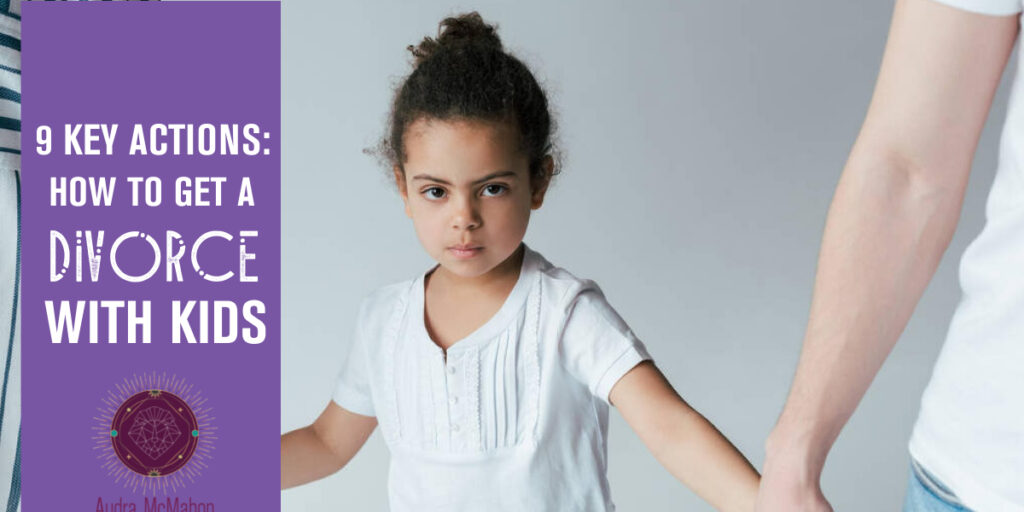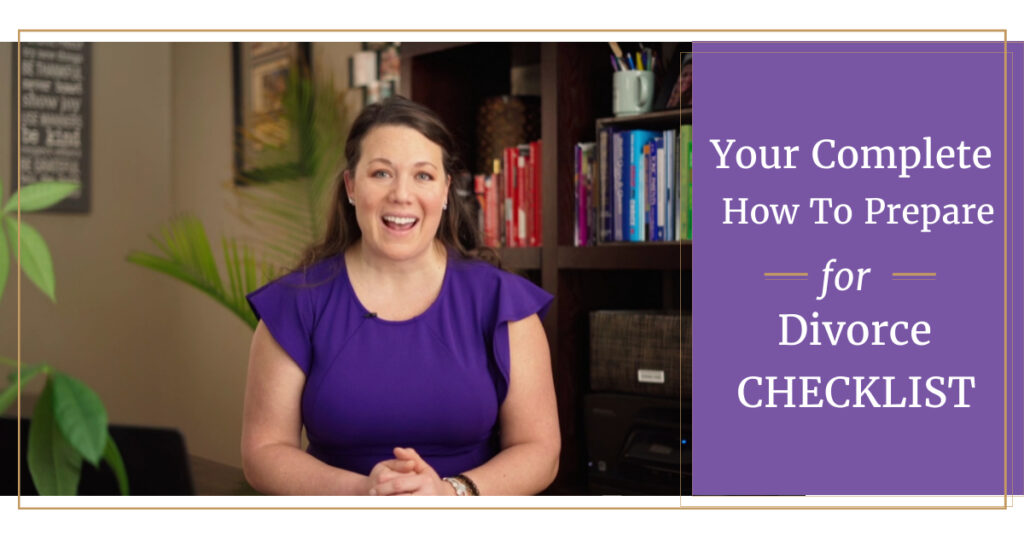
Do you know how to get a divorce with kids? We previously outlined what you need to know before getting a divorce with children involved, but the next step is to understand the key actions to ensure you get the best outcome for you and your children.
When you know the practical steps, you can not only put your divorce in action, but ensure you’re protecting yourself and your young ones.
It’s often the small details that can be overlooked, but can have a detrimental affect on your divorce outcome. For example, it’s especially important to be vigilant if you want custody of your children, because any communication you might make – whether online or not – the other party can use against you.
How to get a divorce with kids
You may have previously gone through the checklist for preparing for a divorce, but what specifically do you need to consider when it comes to your children? Let’s start.
1. Tell a family member or trusted friend
It’s important for you to not only feel safe and supported through this divorce process, but when you have children there may be times you need some extra assistance.
Share what you’re going through with someone you know, trust and can rely on. Doing this early will mean you have people who can look after your children when you have to attend appointments you don’t necessarily want the children involved in. Things like visiting the attorney.
Not to mention, it’s good for your mental health to have someone to talk to about what you’re going through.
2. Audit all your online platforms
What does auditing your online platforms have to do with your children? Well, a lot these days.
Firstly, go through your social media accounts, change any passwords you have and switch your accounts to private. This will stop anyone from being able to take over your accounts or monitor your steps. Then stop posting content to your social platforms. Anything you say or post to these platforms could be used against you.
This doesn’t just stop at social media. Be conscious of any login details, like email accounts, that another party may possibly have access to. If you’re unsure, change the password anyway. And the content philosophy applies to emails too – be careful what you write in emails to others about anyone who’s involved in your divorce.
The other passwords, pins and logins to change include your bank accounts or financial accounts. This will help to protect you and your children financially.
3. Seek advice from an expert when getting a divorce with children
Plenty of well meaning friends and family are going to have a ton of advice to share with you. It will be hard to avoid, whether you’re talking to parents at school drop off or after school sport. However, it’s the advice of a legal professional that you most need right now.
If you’re not able to bring on a lawyer in the early stages, use government support agencies, which often offer free services. Knowing state laws that may impact you or your children is important to understand early on. It means you won’t potentially jeopardize the outcome you want by listening to well meaning, but sometimes ill informed opinions.
4. Tell the children you’re divorcing together
There’s so much to consider when it comes to directly dealing with your children. As we mentioned in the last blog post, deciding how you’ll tell your children is an important decision to make together.
Often, the best scenario is for the two of you to speak to all children together, rather than one parent sharing the news or some children not being involved. Otherwise, it can create unnecessary friction or tension.
5. Sort your living arrangements
Just as you think the process of how to get a divorce with kids seems to be running smoothly, you reach the point of needing to work out living arrangements. This topic can potentially cause heated discussions with a partner. What you decide to do will depend on your current living arrangements, whether you have a shared mortgage, one partner owns the home, or you’re renting.
If you’re renting and you’re moving out, have your name taken off the lease so you’re not liable for anything that happens with the property or finances unpaid.
A home you share the mortgage on may depend on whether you’re caring for the children for the majority of the time and whether you want to continue paying the mortgage in the future.
An attorney or lawyer can help you make a good decision for your situation.
This is a good time to update the gas, electricity, phone and any other utility bills tied to the property that include your name.
6. Work out temporary visitation
The next step is to work out temporary visitation. What will the schedule look like that works for both parents while you’re waiting for formal arrangements to happen? Never sign anything in regards to visitation, even in this temporary stage, without first seeking advice from a lawyer. In a highly emotional state, you could end up making the wrong decision for you or your children.
If you fear for the safety of yourself or your children, you need to seek support and/or contact authorities to ensure you’re all in a safe space. Seeking legal advice in these situations can further help to ensure any decisions you make aren’t going to impact any future custody entitlements.
7. Inform relevant parties
Your children will have to deal with a lot emotionally, so it’s important to let their school principal or teacher know. Not only to monitor and help deal with any behavior that’s not normal, but to also ensure the school knows who will be picking up the children and when.
The same goes for after school groups, sporting clubs or other activities your children are involved in. Let leaders of these groups know who will be picking up the child and to inform you if they notice any changes in your child.
As you’re learning how to go about a divorce with a child, you need to also learn how to lean on your community for help. There are people within your community who will be willing to look out for your children.
8. Document important information you may need in the future
Start a new Word or Google document with the tracking turned on so you can see changes as you document your separation and divorce. Or simply revert to a pen and paper, where you date each item you add.
From the day you begin your separation, start to document things that are important. Here is a list of things you can include in your document:
- A fact file of each member involved, including your children
- A factual account of events or incidents that led to the separation
- The date of your separation
- Communication between yourself and your ex-partner
- Financial information and any changes in finances
- Verbal or physical abuse towards yourself or your children
- Your ex-partner’s role and involvement with the children (including those broken promises to children)
- Your role with and involvement with the children (this could include taking care of the children, payments made that relate directly to the children etc)
- Assets and whose name they’re in
- Debts and whose name they’re in
A lawyer may be able to help you expand on this list, depending on your individual circumstances. We’ve also previously written about the type of documents you need to collate before proceeding with your divorce. Our Complete Preparing For Divorce Checklist is another great resource in this area.
The complete checklist will step you through some more general items beyond how to get a divorce with kids, like changing your will and dealing with jointly held property.
9. File for Divorce
Wondering how to file for divorce with a child? It’s best to consult with a legal professional before proceeding, but here’s a general outline. When you file for divorce, child custody and child support will become part of this – rather than a separate process. If you and your ex-partner can agree on child custody together, you can include this in your divorce settlement. Even if you mutually agree to have full or shared custody of your children, you must add the possession order with your final decree of divorce. The court can then approve the agreement.
However, as parents you may need to attend mediation to help reach an agreement on custody, child support, alimony, and visitation rights. Think of mediation as negotiation, which is beneficial, especially in the case of uncontested divorce. If you can’t agree on your own, negotiations fall down during mediation, or you chose not to do mediation, then your case becomes a contested divorce and may go before a judge for a hearing.
In most cases, the judge will order a mandatory mediation process. Furthermore, it’s the judge who will then determine what’s in the child’s best interests.
If you’re not happy with the outcome, you may be able to appeal a court order. An attorney can work with you on areas you weren’t happy with, whether the home living arrangements or wanting more time with your children.
Now you know how to get a divorce with kids, download our divorce prep checklist to make sure you’re covering all aspects of your life – not just what relates to your children.

We also have experts who deal with divorce and children inside our private preparation for divorce program. Be sure to catch the training to make sure you’re prepared as best as can be for what lies ahead.
